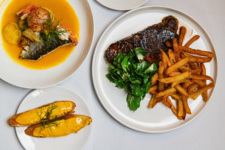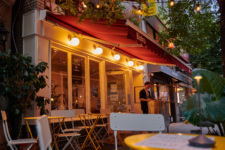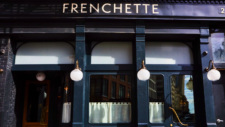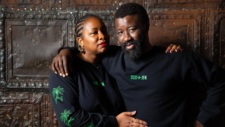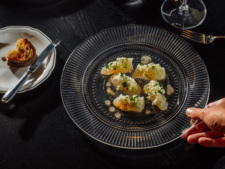
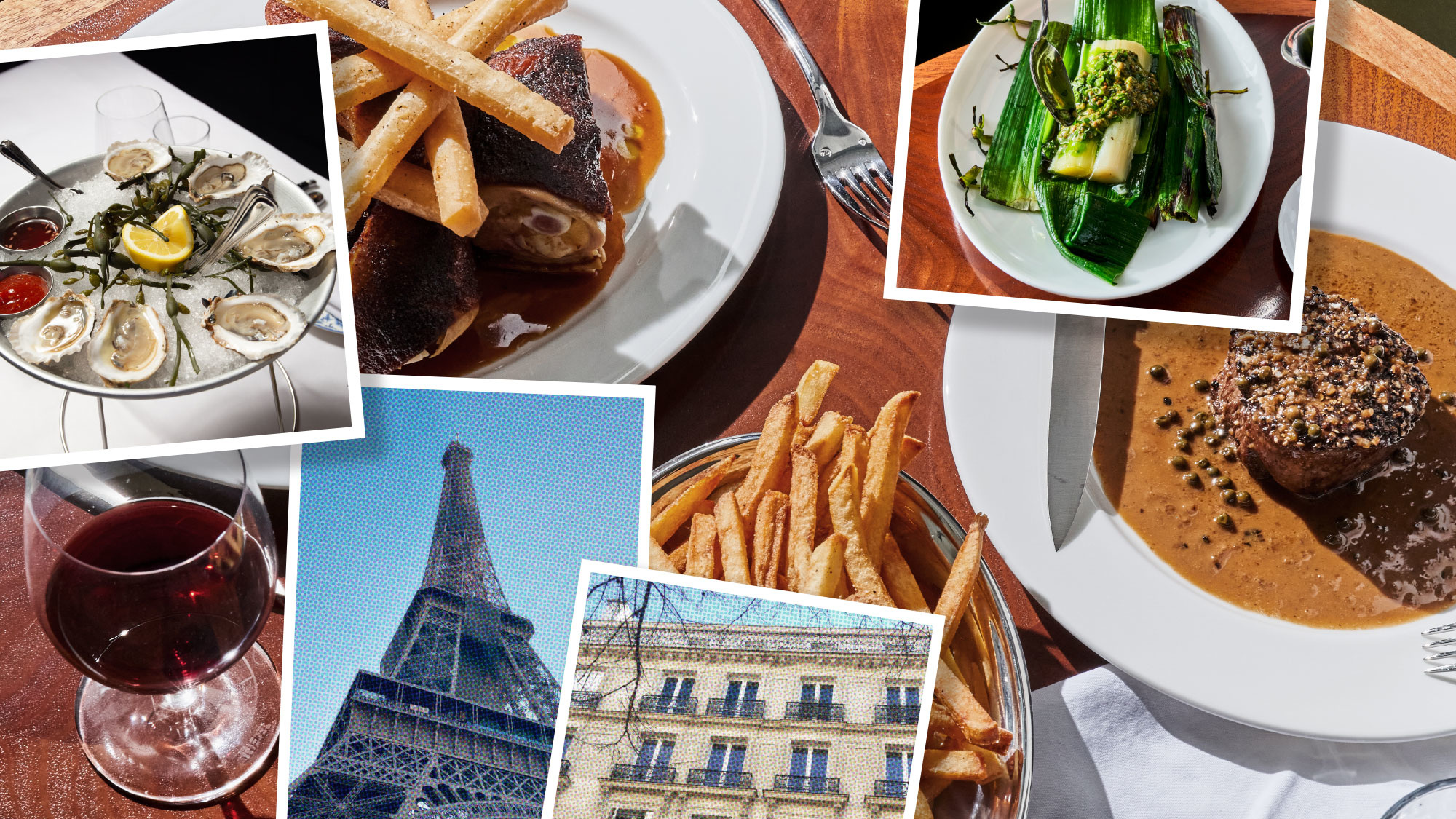
Why Is New York So Obsessed with French Restaurants?
This week on Resy we’re exploring the many facets of French restaurants in New York. We ruminate on the timeless joy they bring. We help you get a table at Frenchette. We tell you where you should go to drink French wine. We’ve got a soft spot for a classic Midtown bistro. We’ve got a list of French restaurants for every occasion. And we unpack why New York has always been obsessed with them.
New Yorkers certainly have eclectic and varied tastes when it comes to our dining preferences. And we’ve also got some pretty exacting standards, too. But one thing we can’t ever seem to shake is our deep-rooted love affair with French restaurants and French food.
And it’s especially noticeable right now with a new wave of French (or French-ish) bistros, brasseries, and wine bars recently opening up throughout the city — Le Dive, Le Rock, Vin Sur Vingt Bistro, Place des Fêtes, and the aptly named Steak Frites Bistro to name a few — joining the many who came before them, like Balthazar, Le Bernardin, and Le Bilbouquet.
Wanting to get to the heart of New York’s French restaurant obsession, we turned to none other than our very own Francophiles in residence — Resy Editorial managing editor Jon Bonné and senior writer Noëmie Carrant. Bonné, a native New Yorker, splits his time between Brooklyn and Paris and has written extensively about French food and wine (his next book, “The New French Wine,” comes out in March, just FYI). Carrant grew up in Paris (do stop by her mom’s cookie shop while you’re there next) and has lived in New York for the past six years.
What follows is our conversation with Bonné and Carrant, along with Resy New York editor Deanna Ting, on everything from New York’s obsession with French restaurants to the eternal search for the perfect jambon beurre.
Carrant: Growing up in Paris, I can tell you that Parisians are obsessed with New York. It makes sense that New York is obsessed with Paris, too. Both cities have had an obsession with each other since forever.
Bonné: I mean, France is the most touristed country in the world for a reason. New Yorkers’ perspectives have broadened, but I don’t think that France has fallen out of them.
Ting: With the big exception of New Orleans, New York is, arguably, one of the few major U.S. cities audacious enough to think it can do French food as well as the French, too, yes?
Bonné: The irony is that New York has long since surpassed the vast majority of cooking in Paris. So, we may have the chutzpah, but we can definitely back it up. I don’t think we [as New Yorkers] want to be French. You know, French cooking in France can be extraordinarily overwrought and boring, but when it’s great, it can also be amazing. There’s a reason that it was definitional in Western cuisine. So when we encounter great French cooking, we love it. It’s a very discerning restaurant culture here.
Ting: Why do you think French food is suddenly so in demand in New York right now?
Bonné: My own wacky theory is that there is finally a level of fatigue with Italian food. So inevitably, we had to circle back to French. I’m joking, but I’m also not joking.
In the early aughts, everything was Italian food; everything was about discovering Northern Italian, discovering Sicily; and Italian wine was coming up big. The big question was: Could Del Posto ever get four stars? Italian food had a hype moment. And then, tapas and Spain had a hype moment. At some point, France was due to come back to the top of the heap.
I think that started before the pandemic. There was Frenchette. There was Le Coucou. Some of it is cyclical. And some of it was also that very close echo chamber, to Noëmie’s point between the two cities. It was New Yorkers seeing a side of France that felt contemporaneous to them. They felt like it was culturally comfortable.
My own wacky theory is that there is finally a level of fatigue with Italian food. So inevitably, we had to circle back to French.
Ting: Did the natural wine movement also play a part?
Bonné: The rise of natural wine was putatively edgy, and it gave a context to France that wasn’t the old context. Suddenly you could drink French wine, and it wasn’t like drinking old people French wine — even if Sancerre is still the one thing that everyone has to have on their wine list. There was a moment when the context of France in the 21st century galvanized here. And not just here but everywhere.
I don’t think it’s coincidental that so much French wine has come back onto wine lists in New York. And it’s not your parents’ French wine. French wine and winemaking have evolved to be postmodern, in the same way that its cooking did. Given the polyglot nature of cooking in New York, French wine had to transform in order to be served with it. There had to be a generational leap into the postmodern.
We’re also seeing bistronomy, which Paris probably had a 15- to 20- year head start on, starting to show up here in New York in interesting ways. It’s this notion that you could do really exquisitely refined, or let’s say fine-tuned cooking, in a small storefront bistro setting.
What it did in Paris was to liberate young, talented young chefs from the constraints of the traditional restaurant model — Michelin stars and everything else. It allowed for really fascinating cooking to take place and for people to take risks. And we’re starting to see bits and pieces of it in New York.
But, you know, the economics of running a restaurant in New York are so much more difficult, starting with rent and labor. I often wonder: Do we not see the level of experimentation in New York that we might if it was more affordable for a young chef to find a place where they could cook for like 20 seats at a time without it being a $300 tasting menu?
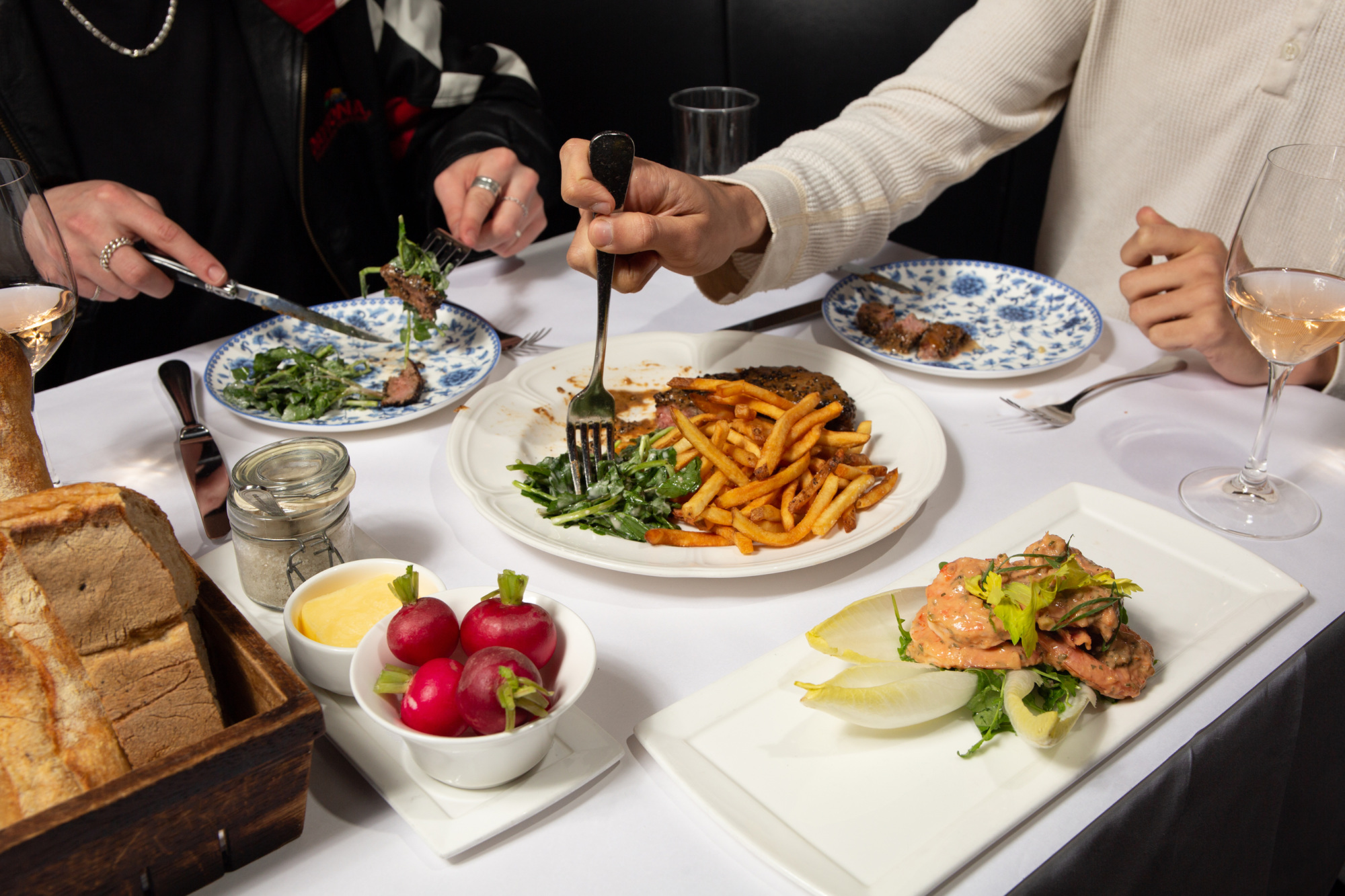
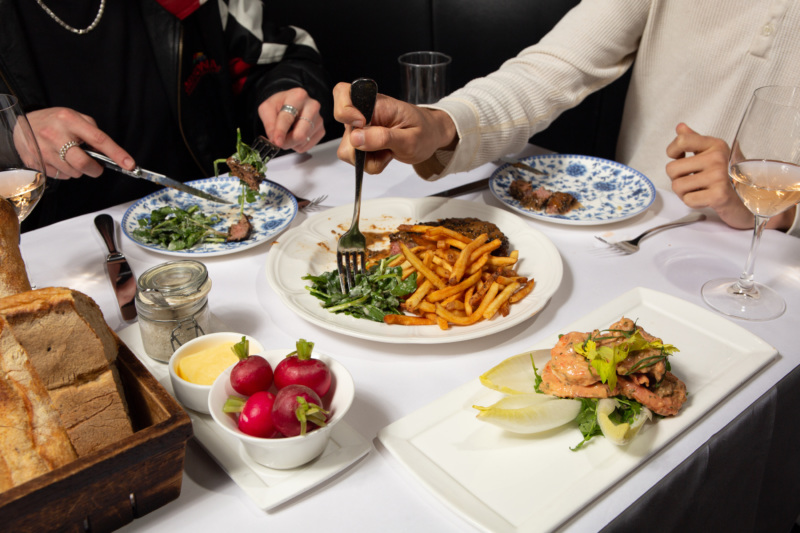
Ting: Do the French restaurants in New York wish they were really in Paris?
Carrant: I haven’t lived in New York for that long, but I’ve noticed a lot of New York restaurant operators fall in love with a certain restaurant in Paris, and then when they open their own restaurant in New York, they base it off that Paris restaurant concept, but it inevitably becomes something else. I’ve talked to several restaurant operators who’ve told me that they loved their experience at Septime and Clamato, and that they really wanted to evoke that vibe and style of serving at their places.
Like Sami & Susu: The owners told me they wanted to recreate that cramped wine bar feeling so intrinsic to Paris. But Sami & Susu is this very cool, modern Mediterranean and Jewish restaurant. I feel like Contra and Wildair are another example: I wouldn’t call any of them French; they’re New American. But they were inspired by these Parisian places.
In New York, when you think of a French restaurant, it’s also this very cookie-cutter version of a French restaurant … it’s a fantasy of what French cuisine is.
Bonné: I’m going to be totally cynical about this, but I think that they’re trying to relive their last trip to Paris. I think they want the nostalgia from the last time they were in the 11th, drinking at Septime Cave. I think this phenomenon is ageless. Americans 40 years ago would go eat in French bistros here because it reminded them of the Left Bank. Boomers would rhapsodize about the Latin Quarter and go eat snails on Madison Avenue. And now in Bushwick, you just want to relive your last trip to Chambre Noir or La Buvette.
I swear Instagram proves me right: When chefs go on their R&D trips, they go to Paris. And goodness knows, if you’re in Paris, you suddenly realize you’re surrounded by Americans, half of whom work in restaurants. So, it’s continuing a tradition of Americans going to Paris and bringing back what they love of the culture, even if, to Noëmie’s point, they translate it into something else entirely.
Carrant: I feel like in New York, when you think of a French restaurant, it’s also this very cookie-cutter version of a French restaurant. It’s always inspired by bistro or brasserie classics, those same kinds of dishes: escargots, steak frites, etc. It’s kind of a fantasy of what French cuisine is, not just to Americans, but people all around the world.
I’ve lived in the States for 10 years now, but when I think of French food back home, it’s kebabs and fries at 4 a.m. Or the kooky Chinese Vietnamese takeout places we’d get ‘Cantonese rice’ and shrimp chips from when we were kids. It’s a great bowl of phở, Japanese skewers of beef stuffed with Emmental cheese, and even Taiwanese food made with excellent French produce. Or it’s what my French grandparents who live in the countryside make: They know how to make every kind of terrine, pâté, and rillettes; we never had a short supply of those at home. And my grandmother’s cooking was just ruled by the seasons. We had tomates farçies in the summer and soups in the winter, all using vegetables she’d harvest from her garden. When I think of really bare bones French cuisine, it’s comfort food. It’s my grandparents. Oh, and it’s all about great sauces, too.
So what I mean by “cookie cutter” is that here, it’s a pretty narrow view that doesn’t even begin to show the breadth of what French food can be. There’s not that much regionality represented, either.


Bonné: Although to be fair, the vast majority of bistros in Paris are also that clichéd French restaurant. You know, steak haché is a cliché everywhere.
Carrant: The quintessential idea of a French restaurant in New York is basically Balthazar, right? It’s this beautiful room with banquettes and seafood towers.
Bonné: And it’s interesting because Balthazar was very much created to be, I don’t want to say a replica, but to be representative of a certain memory of French restaurants.
There was a time when that old-fashioned, mid 20th-century French bistro was very much the coin of the realm for New York City. Le Veau d’Or is probably the best example — let us all hope it comes back in whatever form it comes back — but to Noëmie’s point, there would be pâte de campagne, there’d be snails, there’d be steak au poivre, there would be beef bourguignon.
And maybe there would be some kind of indistinct fish on the menu. If you were lucky, maybe you’d get sole almondine, or sole meuniere. None of this was a heavy lift. But these were comfort foods, when the spectrum of cuisine in New York was narrower.
The other thing is, and there’s echoes of this in Paris as well: People are going back to the classics and rediscovering why classics are classics, like quenelles de brochet. Le Coucou, with its many, many modalities, brought this amazing dish back and, you know, people were reminded why this is a great dish and why it’s beloved.
There‘s also so much pleasure in an understanding of the regional French cuisines and really loving when someone is doing them well. Like with Lyonnais cooking — it’s interesting the debate that came out around Le Gratin: It’s great cooking, but is it Lyonnais cooking? Of course, with traditional Lyonnais cooking, you can eat it maybe once a year, unless you’re desperately trying to get gout.
Ting: Which could be a goal, you know.
Bonné: Yeah.
Ting: Not for everyone. But for some.
Bonné: The new TikTok: #teamgout.
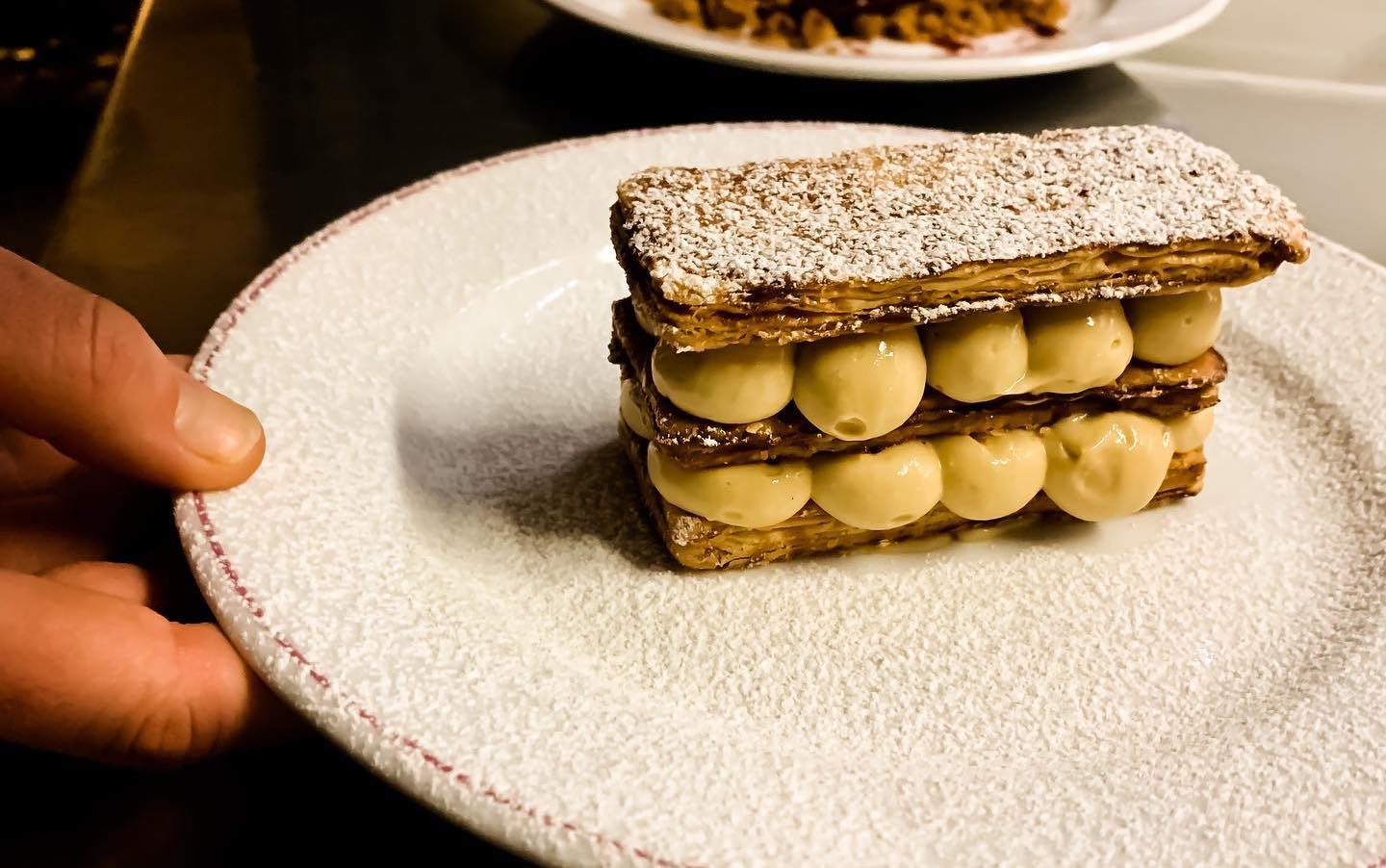
Where to Eat in Paris
Summer in Paris can run swampy-hot one day, damp and cool the next. That means, if you’re putting together your…
Ting: So, who do you think does French food exceptionally well in New York?
Carrant: To me, the best French restaurants in New York are not necessarily outspokenly French, like Chez Ma Tante and Bar Bête: those are the places serving the kind of French food that I love. It feels like what I love to eat when I go back home.
Bonné: The Canadians are saving French food in New York; we’ve unlocked the secret!
Bar Bête is this perfect example; it’s just this very thoughtful perspective on quintessential French cooking. And it’s not fussy at all, but it’s complex and it’s beautifully executed and fully content being itself. It’s not trying to be quote unquote fusion; they’re not throwing ginger and pink peppercorns into anything. Their leeks vinaigrette is this essential reconsideration of leeks vinaigrette that’s not trying to be anything more than it is.
The Canadians are saving French food in New York; we’ve unlocked the secret!
Ting: What do you think of the range of French restaurants here in New York today?
Bonné: It’s strange to think about it now, but there was a time when French cuisine was immigrant cuisine here. The Lûtèces of the world, but also all these neighborhood bistros were opened by French expats or French emigres. Now we think of it as the establishment. But, you know, it’s not really a very long history, meaning that it’s only been since 1900 that French cuisine has fully established itself; there was an enormous influx of French immigrants coming in, both before and after World War II, who did not show up here in tuxedos with caviar. They were in the restaurant trade. And it was a trade.
There is also great baking in New York, which is funny because one of the things that allowed French restaurants to really flourish in the ‘80s was that there were finally French boulangeries here, and you could actually get a serious baguette in New York. This was the era of Brie, and wine and cheese parties and everything else, but it was a novel thing back then to finally get real products. Now you see the second or third generation of that — just extraordinary pastry.
I think that every neighborhood gets the French restaurant it deserves. If you moved Chez Ma Tante to the Upper East Side, they would probably have to tweak some things. There is a handful of Upper East Side French restaurants that still have soldiered on and on. I’m not even talking about the high end; I mean places like Orsay! That’s probably the last of the original constituency for that type of cooking. Now though, you go downtown, and you have Le Dive, you have Corner Bar, and all of Dimes Square. Plus, all those quote unquote French wine bars, that don’t even serve that much French wine. But that’s a story for another day.
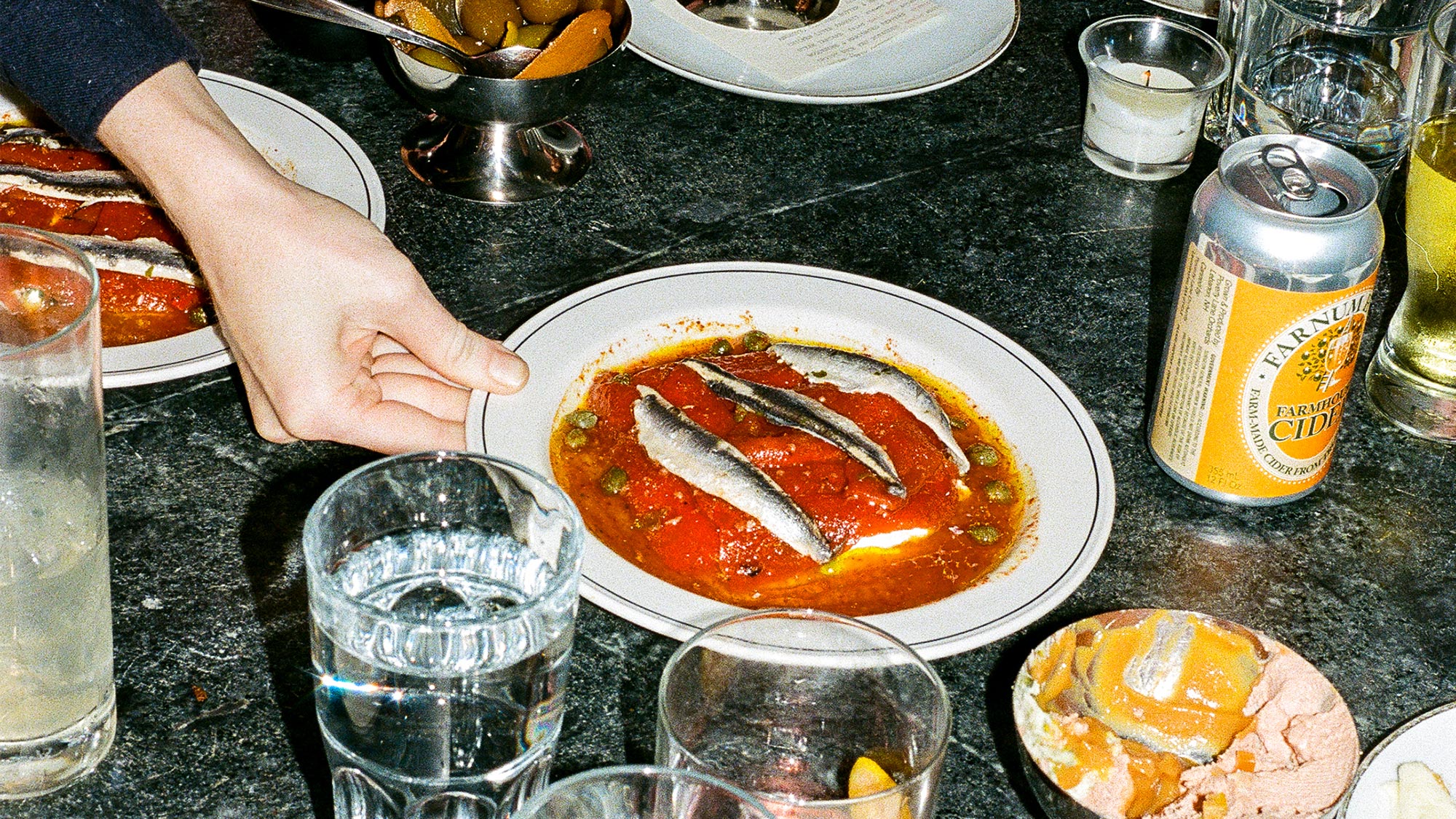
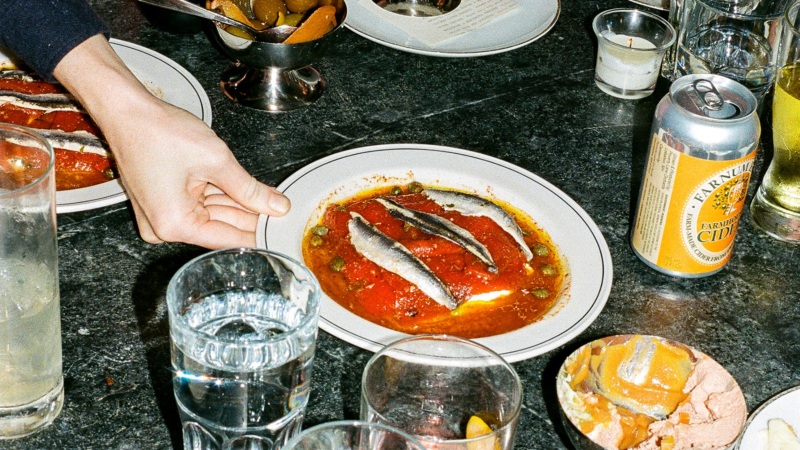
Ting: Indeed. So, you have to make a reservation tonight for a French restaurant in New York. Where are you going?
Carrant: Bar Bête. Le Crocodile. M. Wells. I am curious about Le Rock.
Bonné: Bar Bête for me, too. And Claud. But you know, it’s so contextual. What form of France do I want? There are times when I just want the French onion soup and a salad at La Bonne Soupe that I’ve been eating for decades now. I wish I had more desire to eat fancy French food, but I don’t. Although, I will say I do love a great quenelle du brochet. Maybe I can sneak out for lunch and play hooky and go to Le Gratin.
Carrant: If I’m craving French food, I want something like a sandwich, or a really simple thing. Maybe I’ll get a croissant from Nick + Sons, an excellent bakery that’s close to where I live. I feel like New York needs a French sandwich shop.
Bonné: Right? I would kill for a boulangerie that does a great jambon beurre.
Carrant: Seriously. There’s a good place near McGolrick Park called La Sandwicherie. They do a bit more spruced-up sandwiches that are quite tasty. But most of the time, I just want a basic jambon beurre.
Bonné: I would happily take a jambon beurre on Runner & Stone’s baguette, if anyone is listening.
Carrant: Oh, I just thought of another spot I love: Mimi in Greenwich Village! It is such a good spot, actually. And again, they do a very small menu of a few seasonal dishes executed very well. I think they recently changed their focus to be more like a wine bar than a restaurant, but that used to be a go-to.
Bonné: But isn’t it always like that? The great French neighborhood spot. You know, when I lived in Kips Bay there was this amazing French place on 26th and Third Avenue and now it’s definitely long gone. I don’t know how they ever made any money with the number of customers they had, but their choucroute garnie was amazing. And it did no favors for my health, but I was very, very happy to have that at the end of my block.
Where They Go for French Food in New York
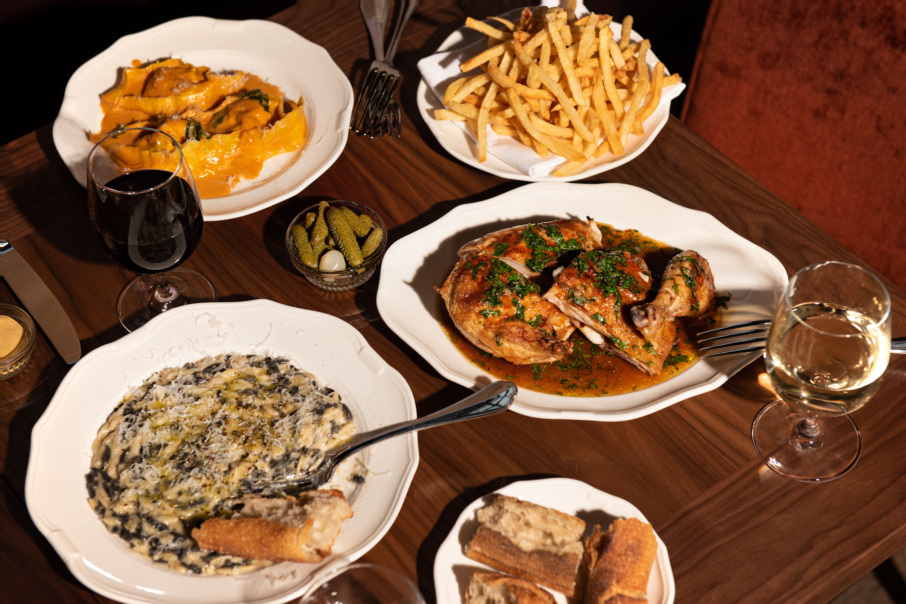
- L’Appartemente 4F: “Stick with a classic: Get the pain au chocolat.” N.C.
- Bar Bête: “I love the rabbit and lobster sausage.” N.C.
- La Bonne Soupe: “Onion soup, yes, but the boeuf bourguignon is a secret hit.” J.B.
- Cafe d’Alsace: “Choucroute garnie is a whole vibe and this one is classic.” J.B.
- Chez Ma Tante: “Always get the pork shoulder with salsa verde.” N.C.
- Claud: “Come for the mushroom millefeuille. Stay for the epic wine picks.” J.B.
- La Compagnie des Vins Surnaturels: “Cacio e pepe popcorn and go long on the Champagne list.” J.B.
- Le Crocodile: “The roast chicken is a non-negotiable.” N.C.
- Le Dive: “Artichauts. Brandade. Mussels. Kronenbourg.” J.B.
- Le Gratin: “Get the eponymous gratin, duh.” N.C.
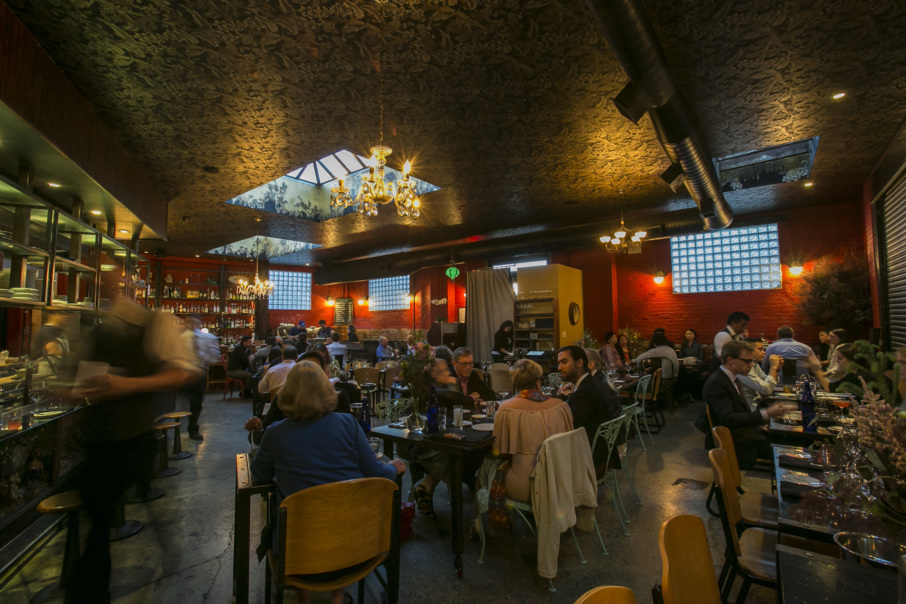
- M. Wells: “My absolute favorite French onion soup.” N.C.
- Manny’s Bistro: “If you think duck confit tacos aren’t adequately French, you haven’t been to Paris lately.” J.B.
- Mimi: “The menu changes all the time, so go often.” N.C.
- Nice Matin: “The Comté omelette makes the case for eggs as a perfect dinner.” J.B.
- Nick + Sons Bakery: “Get the croissant.” N.C.
- Pastis: “The hanger steak is the best steak. Everyone knows this.” J.B.
- Pavé: “A serious contender in New York’s jambon beurre wars. (The paté sandwich is also a keeper.)” J.B.
- Le Rock: “Once you’re done googling ‘barbajuans’ (fried chard ravioli) order them. Also the crab gratin.” J.B.
- La Sandwicherie: “Get the sandwiches and the Petit Marseillais soaps!” N.C.
- Steak Frites: “Your order here should be self-evident.” J.B.
Jon Bonné is Resy’s managing editor and author of the forthcoming book, “The New French Wine.” Follow him on Instagram and Twitter. Noëmie Carrant is Resy’s senior writer and a native Parisian who now calls New York home. Follow her on Instagram. Deanna Ting is Resy’s New York Editor and is adamant about maintaining her Duolingo streak by learning French in her spare time. Follow her on Instagram and Twitter. Follow Resy, too.
Discover More

Stephen Satterfield's Corner Table








